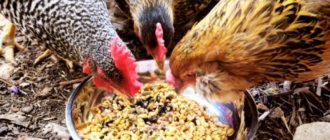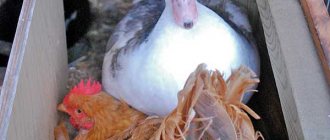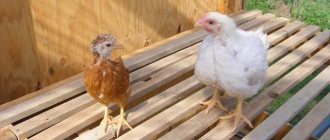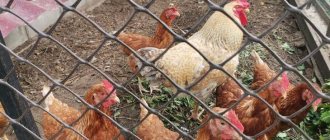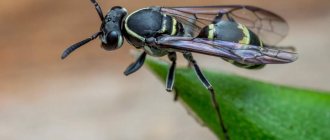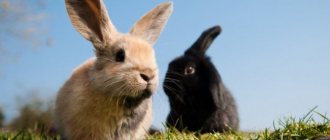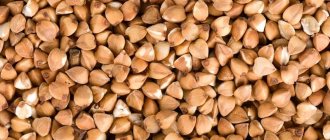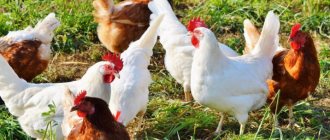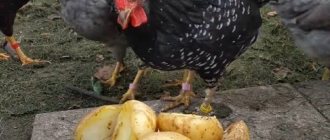Many of our compatriots want to engage in pig farming on their plots, but when starting this business, you need to understand that its effectiveness and profitability are highly dependent on what to feed the pigs. If the future owner manages to maintain a balance between the cost and quality of the feed the animal needs, he will be able to provide his family with meat products at a price significantly lower than the market or store price.
In addition, your own pork will have very high consumer qualities, which cannot always be said about products produced at large livestock complexes.
Domestic pigs can provide their owner with high-quality meat products and become a profitable business
Today we will talk about fattening pigs at home, as well as ways to optimize this process without leading to a decrease in the quality of meat.
Is it possible to give fresh cucumbers to pigs?
To fatten pigs, they also use waste from garden crops grown on personal plots (beet tops, cabbage leaves, overripe cucumbers)
, carrion of various fruits).
Interesting materials:
How long does it take to mix concrete in a concrete mixer? How long can the iron be turned on? How long does it take to charge a car battery? How long does it take to calcinate the electrodes? How long should you spend in the hammam? How long does it take for foil to decompose? How long does it take for spray primer to dry? How long does it take for gypsum plaster to dry? How long does it take to mix the solution in a concrete mixer? How long does a nylon rope last?
Classification of products used
Feeds included in the diet of pigs can be divided into the following groups:
- concentrated are grain products with high nutritional value. They need to be given in the form of crushed grains (pigs are not fed whole grains, since it is practically not digested in their digestive tract). The best raw materials for preparing concentrated feed are barley, oats, rye, corn, sunflower cake or meal, bran, as well as legumes (peas, soybeans, lentils). It is allowed to use a certain amount of wheat, but only feed varieties, because the highest category grain contains too much gluten, which causes digestive problems in pigs;
- coarse - this type includes feed consisting mainly of fiber (hay, straw, corn cobs, dry grass meal, etc.). These products are usually included in the winter diet in highly crushed form;
- juicy - vegetables and root vegetables rich in vitamins and microelements. They are given raw, grated on a coarse grater or processed in a vegetable cutter. The exception is potato tubers. They are boiled (in the peel) and fed mashed, often mixed with other foods;
- green - freshly cut grass or tops of garden plants (beets, carrots, etc.);
- components of animal origin used as a source of protein (meat, fish or fish meal, dairy products);
- kitchen waste - leftover bread, hot and cold dishes, vegetable and fruit peelings;
- mineral and vitamin-mineral supplements . It is mandatory to include only table salt in the diet of pigs. However, it has been proven that adding ingredients such as chalk or charcoal to feed has a positive effect on the health and growth rate of pigs. Many livestock breeders prefer to use ready-made premixes, especially in cases where the variety of feeds or their saturation with biologically active substances leaves much to be desired.
Vegetables and fruits grown in their own gardens are a good help in fattening pigs for many livestock farmers.
In each individual case, the diet and the percentage of products belonging to different groups in it must be selected depending on the season, the age of the pig, its state of health, as well as the owner’s plans for further use (raising “for brood” or fattening using a certain technology ).
About heat stress
The fact is that pigs have an imperfect thermoregulation system due to the lack of sweat glands. In addition, most modern breeds have very high metabolisms, which also increases heat stress. The deterioration of the condition begins already in the range of positive temperatures from 25 to 35 degrees.
Animals' behavior changes, appetite decreases, and breathing problems often occur. Sows and piglets are particularly affected. In extreme heat, the birth process is delayed, the number of stillborn babies increases, and lactation in lactating females decreases. Piglets born in hot weather are more likely to get sick and die in the first weeks of life.
In pigs, heat stress causes a specific pathology called leaky gut or leaky gut . Scientists believe that in the heat, pigs experience a strong constriction of blood vessels, as a result of which the intestinal epithelium begins to suffer from a lack of oxygen. The intestinal wall becomes thinner and its protective function decreases. Simply put, the intestinal walls become more permeable, and pathogens and toxins found inside begin to enter the bloodstream. As a result, not only is the digestion process disrupted in animals, but also their immunity is reduced and their susceptibility to a number of diseases increases. Sometimes inflammatory processes develop in the abdominal cavity.
Today they are trying to solve the problem by adjusting diets, giving additional probiotics and preparations containing certain microelements (for example, zinc), as well as increasing the supply of drinking water. For example, the Brazilian scientist Bruno Silva developed a system for feeding pigs, which is based on the concept of “thermal effect of feed” that he introduced. In addition, breeders continue to work on breeding breeds that have increased resistance to heat stress.
Cost optimization when selecting and preparing feed
To fatten a piglet from the moment of weaning from the sow until it reaches a slaughter weight of 100-110 kg, on average, about 600 feed units are required , which in nutritional value corresponds to 600 kg of oats. When planning what to feed piglets for rapid growth at home, an experienced livestock breeder strives not only to provide the animals with varied and healthy food, but also to try to avoid unnecessary costs.
Newborn piglets in the suckling period are provided with the necessary nutrients obtained from maternal colostrum and milk, provided that the sow has sufficient lactation
For a homestead owner, there are the following opportunities to make pig feeding rations cheaper :
- Independent preparation of concentrated feed mixtures. Obviously, purchasing whole grains and legumes is less expensive than purchasing so-called “complete” industrial concentrates. If he has his own grain crusher, the owner can prepare their close analogues, choosing the right composition depending on the type of fattening (with a predominance of lean meat or lard), the age and physiological state of the pet. The only exception is the process of feeding very small pigs. It is believed that even at home, it is better to feed month-old piglets with ready-made whole milk substitutes and extruded starter mixtures, the use of which greatly facilitates the transition of babies to an adult diet.
- Growing your own vegetables and root crops. Here, along with carrots, potatoes and beets, it is worth paying special attention to crops belonging to the pumpkin family. Their cultivation is quite cheap and does not require extra effort. Pumpkins and zucchini store well and help to maximally enrich the diet with high-quality fiber and vitamins, which are especially important in winter. Animals eat them very willingly.
- Collection and preparation of herbs. Pigs love to walk, and the presence of grazing significantly reduces the cost of keeping them in the warm season. Unfortunately, not everyone has this opportunity. But almost every gardener is able to supply pigs with freshly cut grass every day, which is a useful component of animal nutrition. Greens are given in crushed form and, starting from two to three months of age, piglets can already eat them in large quantities. Of the wild plants, pigs especially love the grass of nettle, dandelion, woodlice, burdock, thistle, quinoa and mantle, as well as legumes (clover, alfalfa, sweet clover, vetch, lupine). To avoid trouble, you need to make sure that the food does not contain plants containing toxic substances (for example, celandine, buttercup or bindweed).
- Collection of other wild plants. It is useful to include acorns (the norm for an adult animal is up to 2 kg per day), horse chestnut fruits, edible mushrooms (boiled or dried), and Jerusalem artichoke tubers. Wild plants contain healthy protein, rare complex carbohydrates (for example, the polysaccharide inulin), tannins and other components that improve the health of pigs and help them gain weight faster. It is known that the unique taste of the famous jamon (smoked ham of the Iberian black pig), highly valued by gourmets, is provided by substances contained in acorns.
- Preparation of so-called “flavors”. This role is played by bread kvass, oat tincture or kulaga (a drink made from sprouted, dried and ground barley). Flavors are fed to piglets in an amount of 100-200 ml per day. Experienced livestock breeders claim that this helps increase average daily weight gain while significantly reducing feed costs.
- Improving the quality of feed by yeasting, malting and ensiling. Let's look at these methods in more detail.
When feeding pigs with collected and stored wild herbs, it is important to ensure that there are no poisonous plants among them
Malting
The initial products are: grain component (crushed grain, bran), water and barley malt (in the ratio 1:2:0.02). The grain mixture is poured with hot water, malt is added, stirred, the container is covered with burlap and left at room temperature for 3-4 hours. During this time, a fermentation process occurs with the conversion of 10-12% of carbohydrates into sugar (maltose). In the diet of adult animals, such feeds include up to 50% of the total norm of concentrates .
| pros | Minuses |
| The food acquires a sweetish taste, is more actively eaten and is easier to digest. | The product cannot be stored for a long time |
Yeasting
Initial products: grain component, water and compressed baker's yeast (in a ratio of 1: 2: 0.01). Yeast is diluted in a small amount of water. All the water, heated to 35-40 degrees, is poured into the container, dissolved yeast is added, and the crushed powder is added with constant stirring. Keep in a warm place for 6-9 hours, stirring every 30 minutes. There are also more complex methods involving the preparation of dough or leaven, preliminary chilling of raw materials, etc.
Adult pigs are given such food in an amount of no more than 50% of the norm for giving concentrates , gradually accustoming them (starting from 10%).
| pros | Minuses |
| The food is enriched with lactic acid bacteria, enzymes and vitamins (primarily D, PP and group B). Taste improves | The product spoils quickly; it can only be fed freshly prepared. Constant inclusion in the diet is undesirable: after a month of use, you should take a break for 10-15 days |
Ensilage
The technology is used for the preparation of succulent and green feed (root vegetables, potatoes, tops of garden plants, wild herbs, corn cobs, legumes, etc.). All ingredients are washed well, chopped (the potatoes are steamed) and mixed. Place the mixture in special containers or holes, compacting it tightly (plastic bags are well suited for putting in holes). The containers are covered with film and a thick layer of straw, and a canopy is placed on top to protect them from precipitation. Without access to oxygen, the mixture ferments and lactic acid bacteria multiply in it.
Animals are given up to 4 kg of silage per day , and care must be taken that uneaten silage does not remain in the feeders.
| pros | Minuses |
| The feed is very nutritious (especially combined silage), rich in vitamins, microelements and lactic acid. It is possible to preserve green and succulent feed for the winter as much as possible | When exposed to air, silage quickly becomes moldy, and in severe winters it can freeze. This kind of food cannot be given. Preparing silage is labor-intensive, especially at the stage of washing and cutting raw materials |
conclusions
The above calculations clearly show that the use of peas in feeding pigs can help save some of the usual soybean meal, without compromising the quality of the feed. It makes sense to grow peas and feed them to pigs. But lower yields compared to grains and higher costs or risks during cultivation have led to the current minimum cultivation area. Soybean prices, which continue to rise, or subsidies for cultivation could lead to a change in this trend. If the sown area remains as small in the near future, it will not be profitable for seed factories to continue to grow varietal seeds and develop new varieties. This could also lead to a loss of know-how and an ever-increasing import of protein feed raw materials into Germany and Europe.
Author: Dr. Manfred Weber, Directorate of Agriculture, Forestry and Horticulture, Eden. Translation by Elena Babenko specifically for the soft-agro.com project
————————————-
I look forward to your feedback and comments. Thank you very much!
Facebook In Contact LinkedIn Email
What should you not feed?
Prohibited products include:
- Waste covered with mold, fungi, and other parasitic organisms. Such food must be destroyed.
- Raw potatoes due to toxins and poor digestion. Tubers that are green or have sprouts are especially dangerous due to solanine, which does not break down even when cooked.
- The water in which the potatoes were boiled is not suitable for making mash - it is thrown away.
- Large amounts of salt are contraindicated: an overdose can cause death. Salt or salted herring is especially dangerous for piglets.
- When purchasing chalk, the purpose of the product is specified. Produced for drawing on a blackboard is not suitable due to harmful impurities that can harm the animal. Only feed types of product are needed.
- Some herbs contain toxic substances. These include milkweed, black nightshade (basnika), dog parsley, hemlock (poisonous hemlock), caustic buttercup (night blindness), water bud, and pikulnik.
- Poisoning can occur from boiled beets if they are left in hot water for a long time.
Attention! Processed products from castor beans and cotton contain gossypol, a dangerous alkaloid. Before these herbs are fed to animals, they must be treated with high temperatures or alkali.
The feeder is filled with as much food as the pet can eat. The remains are thrown away to prevent poisoning from sour products.
Fattening a pig at home is not easy, but it is possible. However, before you decide on an undertaking, it is worth calculating the potential costs and trying to optimize them. Only then will cultivation bring both pleasure from the process and benefits from the sold raw materials.
The benefits and harms of apples for animals
An apple is a very tasty, healthy and, importantly, practically hypoallergenic fruit. It contains in large quantities:
- cellulose;
- pectin;
- vitamins K, C, E, P, B1, B2;
- iron;
- potassium;
- calcium;
- manganese.
A small amount of fruit in an animal’s diet can ensure normal digestion and removal of toxic substances from the body; apples also strengthen the immune system. The iron contained in them saturates the body's cells with oxygen. Calcium helps strengthen the skeletal system and maintain healthy teeth.
However, there are a number of negative factors that are harmful when consuming this fruit. The first of these is coarse fiber, which is difficult for animals to digest, and the second is a very large amount of fruit acids and sugar.
The greatest danger comes from apple seeds, which contain hydrocyanic acid. In fact, it is a very toxic poison that can be fatal in large quantities.
